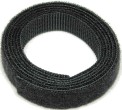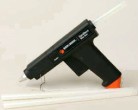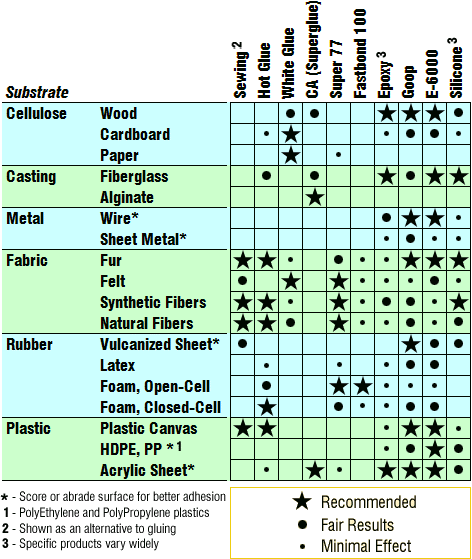
 Search Here
Search Here
MISC
Parts List
Robot Forum
Chat
Member Pages
Axon MCU
Robot Books
Shop
Contact
SKILLS
How To Build
A Robot
Tutorial
Calculators
Mechanics
Programming
Miscellaneous
Robots
Space
HARDWARE
Actuators
Batteries
Electronics
Materials
Microcontrollers
Sensors
SCIENCE
Robot Journals
Robot Theory
Conferences
How to work with Velcro, Tape, and Adhesives.
Common Uses
Velcro, tape, and epoxies seem to have only one obvious use: 'ghetto robot construction.'
But they have many other uses for serious robot hobbyists that are often overlooked.
Due to the slight looseness they exhibit, they can act as a mechanical dampener by absorbing
shock and vibration. They also are not permanent. You can quickly make changes to prototype
robots without having to waste that extra hour removing a single part to drill that extra hole you forgot.
Before reading on I would like to make one comment. The larger your robot, the larger the forces expected. However the below all use chemical bonds (stickyness) to function which have set amounts of possible force. So the larger the robot, the less use you can expect to make out of the below methods and the more you will be required to use traditional fasteners. Always opt for smaller lighter robots as it gives you more construction methods to choose from.

Velcro
Velcro is great for making your robot modular. Make a neat circuit or sensor that could
be useful for future robots? Design the circuit to be velcroed to your robot so you can quickly
move it to other robots. This is also great for attaching batteries to your robots. Need to
swap out a battery for a recharge? Do it in seconds with velcro.

Tape
Tape also has many uses. But there are also many types of tape. I do not need to
explain duct tape, for example. There is also double sided sticky tape. Ever make a 4 wheel robot
only to realize it only works on perfectly flat floors? 3 points on a plane are guaranteed to always
be on that plane, but 4 are not. Use double sided sticky tape as a suspension system. Attach your wheel
servos onto your robot with a layer or two of this tape instead of using screws. Need a light
shield from ambient/Sun IR? Use electrical tape to cover your sensor array as it is opaque to IR.

Adhesives
Adhesives includes glue and epoxy. There are so
many types of adhesives with so many specific uses. Super glue is very useful for extremely light
weight robots. But steel cement (which can bond steel parts together) can be used for fairly large forces.
Plastiweld can chemically bond two peices of polystyrene. Actually, if any chemical can dissolve any material,
smaller amounts of it can bond separate parts of that material together with a very strong connection.
PC-11 White Epoxy Paste is a marine grade water sealent epoxy.
Don't forget about hot glue that can fill gaps and holes easily.
Additional Tips
These types of bonding materials all use chemicals bonds. Chemical bonds are dependent on surface area,
if you can increase the bonded surface area, you can make the bond stronger. One way of increasing surface
area is by roughing up the surface. Really rough surfaces can have surfaces areas twice or more of smooth
ones. A rough surface also better distributes shear forces.

Society of Robots copyright 2005-2014